The use of sawdust in the garden and vegetable garden for mulching, fertilizing the soil and loosening it: benefits and harms
Many summer residents have long been using sawdust in their garden and are sure that they only benefit them. However, there is a lot of controversy on the Internet about the fact that fresh sawdust can also cause significant harm to your plants (this is true if they are used incorrectly).
Next, we will figure out how to properly use sawdust in the garden (for mulching and applying to the soil to loosen it), we will analyze the features and nuances of their use so that they only benefit your garden and its inhabitants (plants).
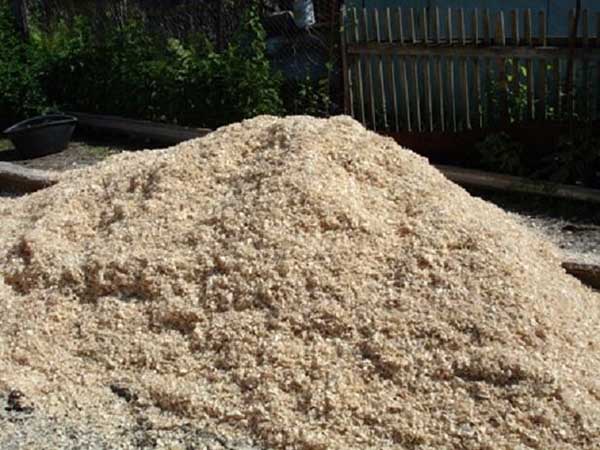
Content
- 1 The use of sawdust in the garden: what are the advantages of using them
- 2 When to use sawdust for mulching
- 3 Rules for the use of sawdust in the garden: how to use it correctly for mulching and digging
- 3.1 What crops can be mulched with sawdust
- 3.2 How to prepare sawdust for use
- 3.3 How to water a bed mulched with sawdust
- 3.4 Does sawdust take nitrogen from the soil
- 3.5 Does the soil acidify
- 3.6 What to do if fresh sawdust has acidified the soil or taken nitrogen from it
- 3.7 How to acidify the soil with sawdust and which plants love acidic soil
- 3.8 Other answers to popular questions (FAQ)
- 4 What sawdust (what kind of tree) is better to use
- 5 What can be used instead of sawdust: alternative mulching materials
The use of sawdust in the garden: what are the advantages of using them
Let's list the many benefits of using sawdust (especially for mulching):
- Fine retain moisture, do not allow the earth to dry out quickly. Accordingly, mulched beds need much water less often.
- After watering (and raining) on the ground no crust forms, which means, a mulched garden no need to loosen.
Opinion: "The soil under the sawdust always remains loose and moist, and you will work less.".
- Prevent weathering of the soil, protect from washing out.
On sandy soil and windy areas, this is the best (if not the only) remedy for drying out the soil.
- Under sawdust sharply reduced heating of the soil surface during the day (which is very important in the heat).
At the same time, the mulched soil is not supercooled at night. In other words, mulch evens out the temperature (temperature fluctuations) of the soil day and night.
- Prevents weed growth. You not necessary will be constantly weed the beds.
Of course, some weeds can still germinate, but there will be very few of them.
- Reduce the depth of soil freezing in winter and protect plant roots.
Namely, they prevent freezing of sub-winter landings Luke and garlic.
- Gradually decomposing and decaying, sawdust make the soil more loose (air and moisture permeable). In other words, sawdust can be brought in for digging (mixed with the ground).
Important! Often all problems and negative experience of using sawdust occur because of their misuse to loosen the soil (i.e. introduction into the ground for digging).
- Some gardeners use sawdust as heating (raising the temperature) litter (similarly warm bed of grass), planting heat-loving plants on top of it (the same seedlings of cucumbers, peppers, zucchini).
- And in the sawdust you can store vegetables (the same carrot),
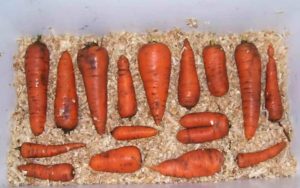
- and tubers and plant bulbs (for example, the same dahlias).
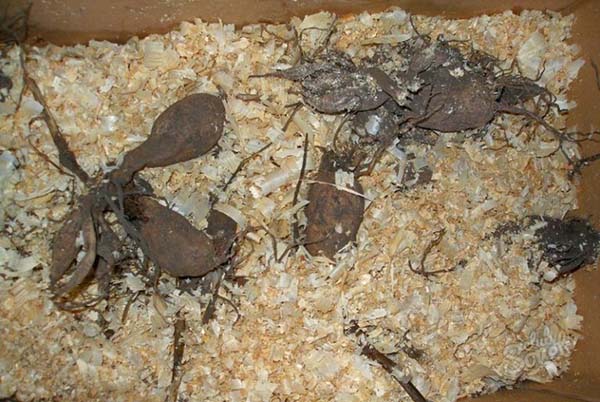
In general, tubers, bulbs or rhizomes can be germinated in sawdust. gladioli, anemones, dicenter, ranunculus, calla lilies, Cannes, freesia.
disadvantages
Of course, the main claim made by novice summer residents to sawdust (especially coniferous trees) is the fact that they can adversely affect soil acidity and nitrogen content, because of which you can simply be left without a crop.
Read more about this in separate paragraphs ("do sawdust reduce acidity" and "do they take nitrogen from the soil").
Here's the thing: slugs tend to be active after wet nights (with dew). Respectively, on wet nights any slug mulch is dear home... AND, vice versat, at dry nights, any mulch will be irresistible for them obstacle.
Advice! It is very effective to lay out old boards next to the beds at night, and in the morning to collect slugs from their back.
By the way! More about how to deal with slugs on the site, you can read in this separate article.
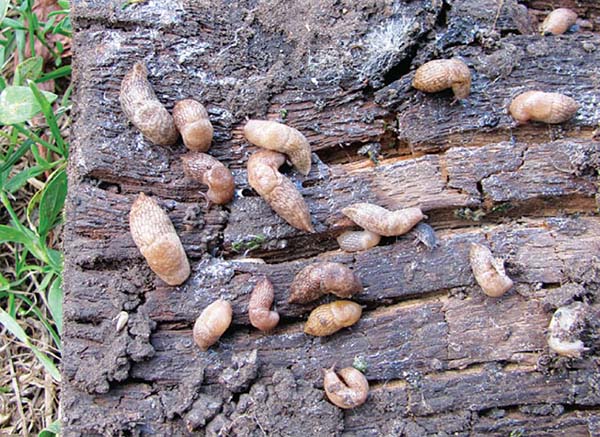
Opinion: “The slugs are much smaller than when I mulched with grass. And no ants get caught in the sawdust. "
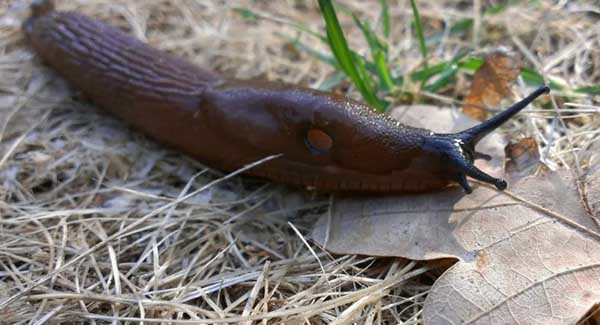
Video: the whole truth about sawdust is an undeservedly abused organic matter
When to use sawdust for mulching
As a rule, the plant is mulched from late spring (early summer - in regions with a short warm period) until autumn.
The following tips will help you choose the right moment to mulch:
- Mulch soil you can only after warming up (up to + 10-12 degrees to a depth of 10-12 cm). Moreover, even in greenhouses soil is mulched only at the end of returnable spring frosts.
- If the culture is planted seeds, then mulching is done only when the plants reach heights over 5-10 cm, otherwise mulch can become an insurmountable obstacle for young seedlings.
If you do this ahead of time, then the soil will be cold and the plants will not develop well.
The fact is that if you mulch immediately after planting seedlings or emergence of seedlings, and do not allow the ground to warm up, then the plants will noticeably lag behind in growth and development.
- There is an opinion that bees do not like essential oils of wood (the smell of fresh sawdust), which may impair pollination, therefore, it is better to mulch with fresh sawdust after the mass flowering of the main pollinated crops, and rotted or soaked - at any time.
- In the fall (before winter), you can mulch the roots of plants (near-trunk circles of trees and shrubs) to protect against snowless frosts.
In the fall, you can also add sawdust to empty beds, so that by the spring they are overwhelmed and become suitable for digging with the ground.
- In spring, if you have a cold climate (for example, Siberian), it is advisable to remove sawdust to quickly warm the soil, and after the onset of constant heat, you can return it to the place.
Rules for the use of sawdust in the garden: how to use it correctly for mulching and digging
Unfortunately, most of the failures (harmful consequences for the land and plants) occur due to the fact that gardeners do not know the rules for using sawdust or misunderstood something they heard (someone said).
Therefore, below we will describe in detail and repeat several times all the features and nuances of the correct use of sawdust.
What crops can be mulched with sawdust
Vegetable crops:
- Tomatoes, peppers, eggplants;
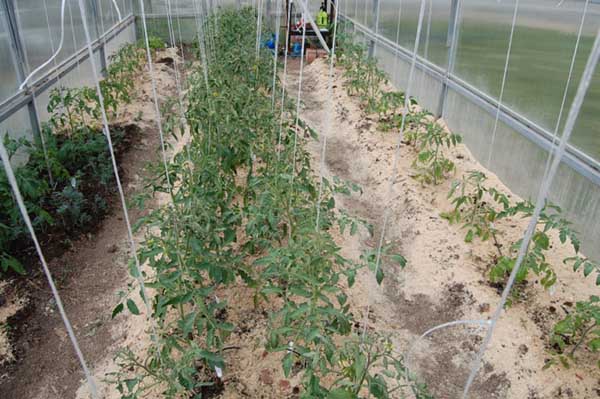
- Beets;
- Carrot;
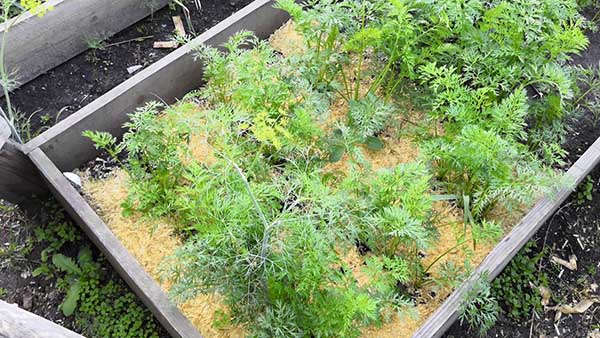
Opinion: “I cover the beds with carrots together with the aisles with a thick layer of sawdust. Carrots do not turn green. I don't water it, the earth is soft, not dry. And since autumn I have been digging with ash. But everyone criticized me. "
- Garlic (including when planting before winter);
- Onion (in the spring and before winter);
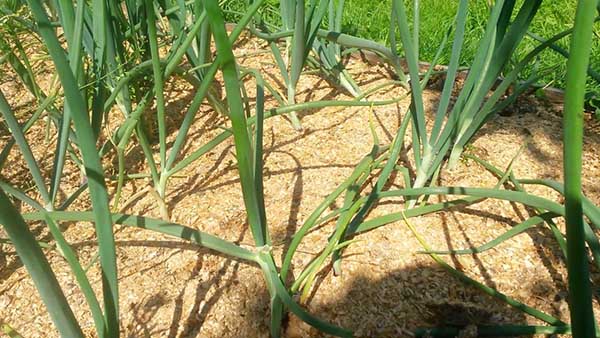
Opinions:
- "When planting garlic and onions before winter, they are always covered with sawdust with a layer of 5 cm."
- “During the drought of this year, fresh sawdust saved my garlic - it was green, good heads, and not mulched looked quite different - such a contrast.”
- “Garlic has grown from a fist! More winter! Everyone is surprised, and so am I. Just then, after reading about nitrogen, I spilled it with urea and green fertilizer, constantly loosened it up ”.
- Pumpkin and melons: cucumbers, zucchini, pumpkins, watermelons, melons.
Berry and fruit crops:
- Currants and gooseberries;
- Strawberries;
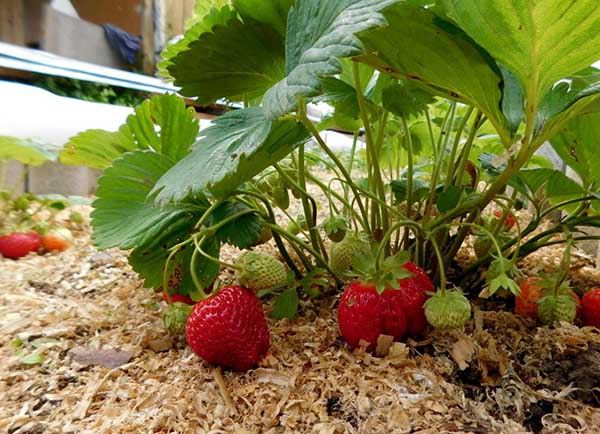
By the way! Strawberry berries always remain clean on sawdust.
- Raspberries.
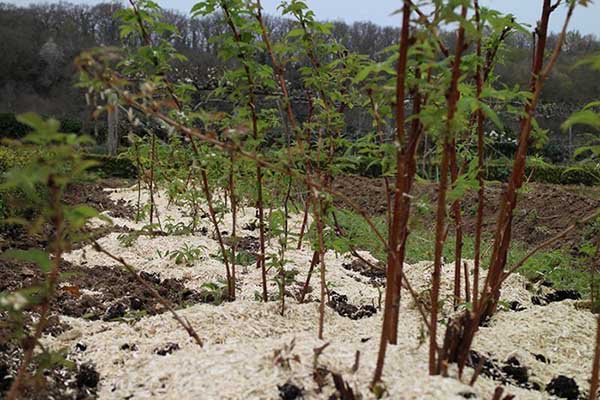
Flowers and flower shrubs:
- Hydrangeas;
By the way! And hydrangeas generally love slightly acidic soil, so they can be mulched with fresh sawdust.
- Roses (for example, using as a covering material);
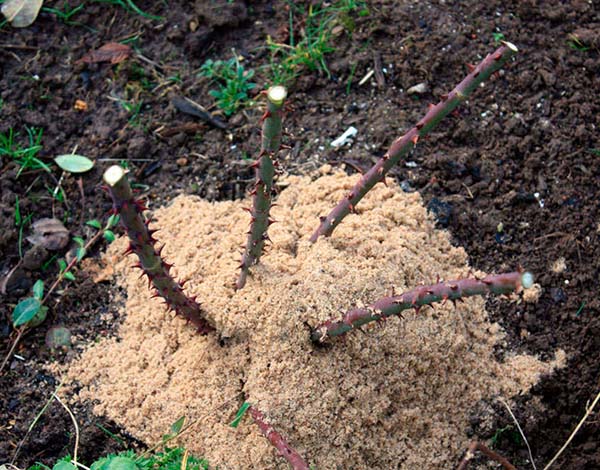
- Petunias;
- Peonies;
- Bulbous tuber: gladioli, cannes, calla lilies, etc.
Opinion: “And I mulched gladioli with fresh sawdust from conifers. When dug up in the fall, the bulbs were huge! This year I want to mulch the garlic with sawdust, when it rises in the spring and the soil warms up. We always make the beds high, because we have dampness. "
And also any other ornamental plants (hosts, geyher).
How to prepare sawdust for use
If you want to exactly to bring sawdust for digging, then here's what you can do in advance to prepare them correctly:
- As you know, the process of sawdust decomposition will be most active in a humid environment and in the presence of a large amount of nitrogen. Therefore, as an option, sawdust can be soak in a separate container (preferably airtight to keep warm inside) in a solution of urea (carbamide) for 2-3 weeks.
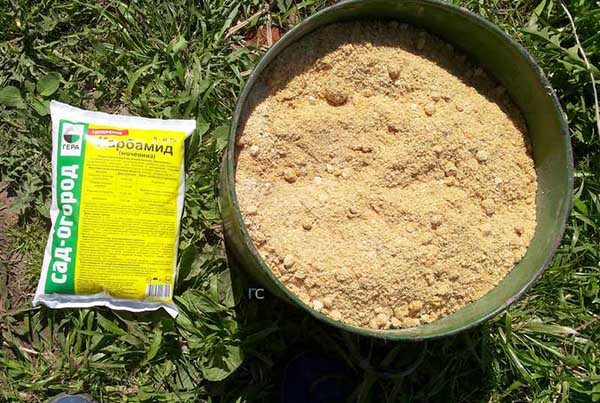
In general, it is advisable to prepare sawdust compost not only based on urea, but also by adding to it, superphosphate and potassium sulfate.
- Pour out in the compost heap and wait for them to heat up along with the rest of the organic matter (for better composting, as a rule, manure or chicken manure is added, as well as other nitrogen-containing organic matter, for example, cut grass and plant tops).
Important! If the sawdust has become dirty, this does not mean that they are overfilled.
Nevertheless, as a rule, completely rotted sawdust has exactly a dark brown "dirty" color, semi-rotted - light cinnamon, and fresh - light yellow.
- You can also try immediately bring under digging together with dolomite flour (for deoxidation) and nitrogen fertilizers (with the same urea).
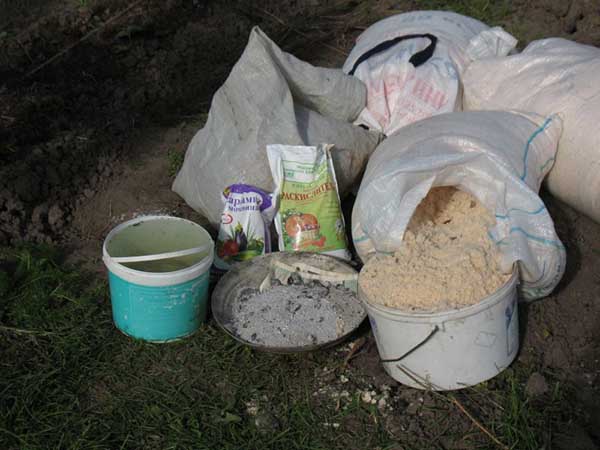
Note! If you are going exactly mulch, then fresh sawdust need not be prepared in advance.
Although, if you are very afraid, then for reassurance, sawdust can be additionally shed nitrogen fertilizers, or even better, add them along with the grass (for example, the tops of the same green manure).
Video: what to do so that sawdust quickly pereklyucha
Video: how to prepare sawdust for use in the garden
How to water a bed mulched with sawdust
Obviously, if you use a hose for irrigation, then the sawdust will be washed out on the sides from a strong jet (or a sprinkler under a high pressure).
How to be?
- Can buy special nozzle for the hose, in which you can adjust the watering mode. Specifically, you need a shower mode.
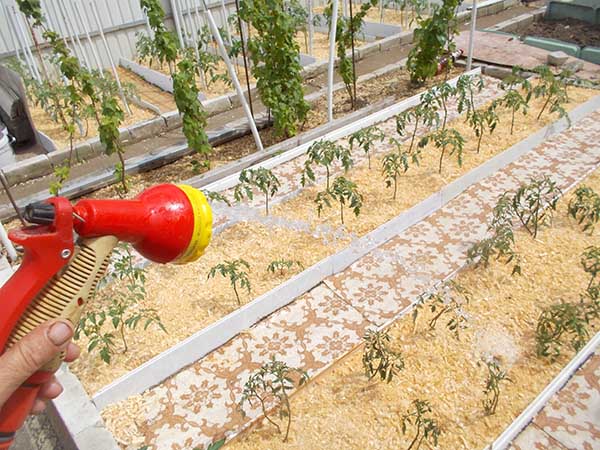
Or buy spray tip.
- Or pour from a watering can.
Advice! In any case, the first time you need to carefully spill the sawdust with a watering can with small holes.
Does sawdust take nitrogen from the soil
Yes, fresh sawdust does contain a large amount of carbon and, when rotted (overheated), absorb (take) a lot of nitrogen from the soil.
We remind you! Nitrogen is required for the growth of the aboveground (green) part of plants.
That is why, as a rule, they are pre-soaked in solution. urea (or watered with liquid nitrogen fertilizer after application to the garden).
Opinion: “We dug up beds of sawdust and everything did not grow until we figured out to water the beds urea... The sawdust took away nitrogen, and the plants simply stopped growing or did not even emerge. ".
Thus, if you want improve the soil structure by introducing sawdust for digging, then you need to use only rotted sawdust and / or soaked in urea.
However, you must understand that sawdust lying on the ground (not buried in the ground) cannot take nitrogen from the soil, in other words, mulch can fresh sawdust.
Of course, to calm the soul, so to speak, just in case, you can additionally spill them all the same urea (after all, in any case, at the beginning of the growing season you will feed your plants nitrogen fertilizers) or mix with freshly cut grass or siderata (cut tops).
Idea! In spring, fresh sawdust can be scattered along the aisles and / or on the paths between the beds, so that it is convenient to walk on them (there will be no weeds, slugs crawling, ants run). And in the fall (after harvesting) or even better in the spring, mulch the beds, and a year later - dig it up from the ground (bring it under digging).
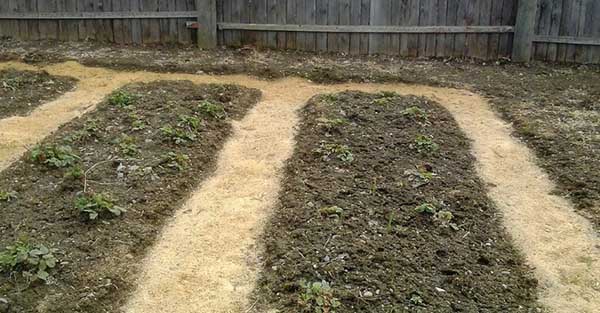
Does the soil acidify
Many people are afraid to use sawdust in the garden. they also strongly acidify the soil, and, as you know, the overwhelming most garden crops prefer neutral soil (and rather even close to alkaline than acidic).
Indeed, fresh sawdust can acidify the soil, but only fresh and only softwood trees (for example, pine), and only provided that you bring them under the digging (mix with the earth).
In the spring you can use fresh coniferous (pine) sawdust, but they need exactly mulch, and only then dig up in the fall (after harvesting) or even better - next spring.
When mulching, acidity will not increase in any way, acidification will not occur, because sawdust on the ground.
It is quite another matter if in the spring, bring in fresh sawdust for digging (mix with earth) then you guaranteed to acidify the soil and the planted plants will begin to suffer (their leaves will turn yellow).
If in this way (by bringing in fresh sawdust for digging) you want loosen the soil, then together with sawdust should add one of the deoxidizers — dolomite flour, wood ash, chalk, and nitrogen fertilizer (eg, urea or ammonium nitrate).
Opinion! “Once, for digging, we brought in fresh sawdust, mostly pine, for two years nothing grew, not even green manure! Several twigs rose and sat thin and pale, almost white, until autumn. And only in the third year the potatoes grew somehow, but the harvest was meager! ".
Video: the effect of fresh sawdust on the soil
What to do if fresh sawdust has acidified the soil or taken nitrogen from it
- infusion of mullein or bird droppings (any other manure).
- herbal infusion (green fertilizer).
- urea or ammonium nitrate (the most efficient option).
If the soil has become acidic (for example, garlic has turned yellow), then you can quickly deoxidize the soil:
- soda solution (2-3 tablespoons per bucket of water);
Yes, you probably know that soda is death to the earth. However, if you follow the norm, then soda will not bring any harm to your soil.
- a solution of ordinary slaked lime;
- ordinary inexpensive building chalk, adding it for digging or watering with chalk solution (1 glass per 1 bucket of water).
By the way! The site has a separate article about how to change the acidity of the soil (lower or increase).
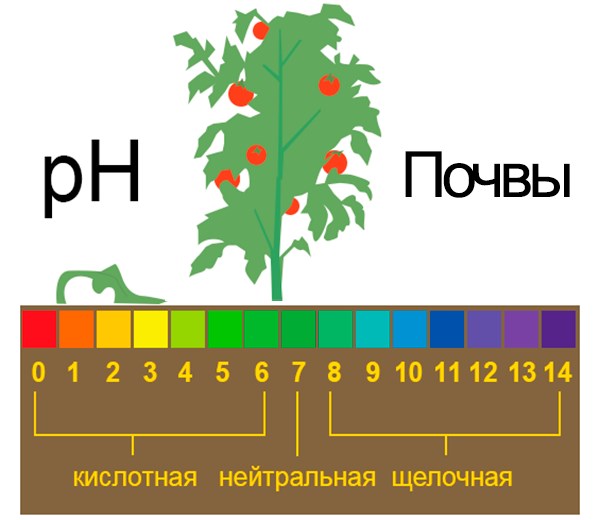
How to acidify the soil with sawdust and which plants love acidic soil
If your garden soil, on the contrary, is too alkaline, and besides, tap water also has an alkaline reaction, then fresh coniferous sawdust is your way to equalize its acidity (bring it to a neutral reaction).
Thus, fresh coniferous sawdust can be used to prepare soil for plants that love acidic soil.
What kind of plants plants like acidic soil?
- All cultures family heather — heathers, blueberry, blueberries, lingonberries, cranberries, azaleas andrhododendronsand also erica, hydrangea and some conifers.
Other answers to popular questions (FAQ)
What layer to mulch?
- As a rule, in the Middle Lane, a layer of 5-8 cm will be quite enough.
In warm southern regions, the sawdust layer can be increased up to 10 cm.
Can small sawdust be used?
- Sometimes sawmills offer such small sawdust that they look like wood flour, and sometimes, on the contrary, very large (like shavings). Ideally, you want something in between (mid-range).
Small sawdust can be used, but they quickly clump (become crusty) and have to be additionally loosened.
Does the wind blow sawdust all over the garden?
- No. After the first watering or rain, the sawdust will be compacted, and they will no longer be afraid of either wind or downpour.
Is it possible to mulch with sawdust before winter or only in spring?
- Before winter, you can mulch the roots (tree trunk circle), this will protect against snowless frosts.
But won't coniferous sawdust, due to the high resin content, poison plants?
Can the beetle (beetle) lay larvae under sawdust?
- No, this is not a May beetle, but a bronze one. Their larvae are very similar. But the May beetle just doesn't like mulched soil, preferring open flat beds or heaps of land.But the bronzovka lays eggs in such places, in the same compost heaps, manure, in short, for organic matter. At the same time, it should be understood that bronze is not dangerous for plants, because its larvae feed on dead, semi-rotten organic matter. Another thing is the May beetle (Khrushch), which really hurts, gnawing the young roots of seedlings and seedlings.
Can you use pressed sawdust after soaking it?
- If they are not saturated with anything, then you can use.
Where to buy sawdust cheaply?
- At the local (closest to your site) sawmill.
What sawdust (what kind of tree) is better to use
Only sawdust can and should be used natural origin, therefore, it is better to take them at sawmills, where logs are cut into sawn timber.
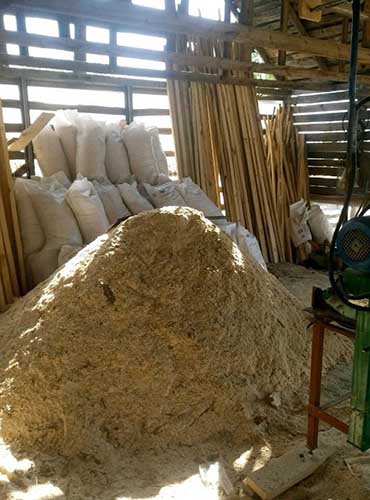
As for their price, they usually cost 30-50 rubles per bag at the sawmill (sometimes they give it away for free). For a 6 meter bed, you need about 2 bags (60-100 rubles).
Important! In no case sawdust from MDF, chipboard cannot be used and other building materials that contain glue and other various chemicals.
Do not try mulch waste from furniture factories!
If the sawdust is impregnated with something, they have an obvious unpleasant chemical smell (for example, machine oil), then this is a serious reason to refuse to buy them.
Usually, at sawmills mainly offer only coniferous sawdust (and most often it is pine).
But deciduous sawdust (for example, birch) is a real rarity and scarcity.
However, as you know, coniferous sawdust acidifies the soil, which means that you will need to make sure to make soil deoxidizers, the same dolomite flour or wood ash.
Of course, ideally, it is better to mulch with sawdust from deciduous trees, and even fresh (that is, without any preparation).
Think! It is believed that oak sawdust (as well as aspen), especially fresh ones, are not very suitable for both mulching and digging, because they have a lot of tannins that can inhibit root growth, in other words, they will oppress plants.
Therefore, oak sawdust is used as a decorative mulch (for beauty), laying them on top of geotextiles, with which large perennial plants are tightened so that weeds do not grow under them.
In general, if you achieve overheating of oak sawdust, pouring nitrogen fertilizers on them, then you can partially wash out some of the tannins.
What can be used instead of sawdust: alternative mulching materials
You can also mulch beds, flower beds, tree trunks of flower and berry bushes, as well as fruit and ornamental trees with the following mulching materials:
- wood chips;
- mowed lawn grass;
- straw or hay;
- bark of trees;
- compost and humus;
- sunflower husk;
- needles (rotted coniferous litter);
Only not with bare needles (needles), but with forest litter - the top layer of soil, which is easy to pick up with your hands or a spatula (along with needles).
Thus, now you know how valuable organic material sawdust is, of course, if you apply it correctly (sawdust). We hope that you will no longer be afraid to use them in your garden.
We remind you! It is worth distinguishing between “digging with sawdust” and “mulching with sawdust”.
You can mulch with any sawdust, including fresh (and even coniferous), but you cannot bring fresh sawdust for digging without preliminary preparation.
Video: using sawdust in the garden

